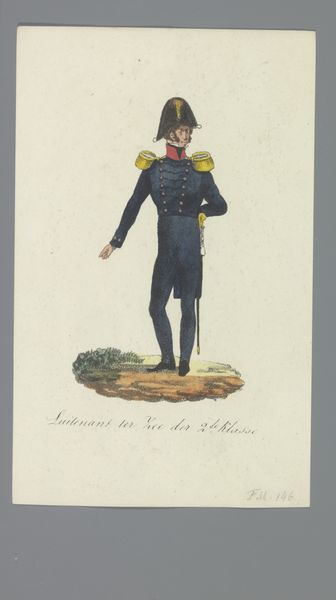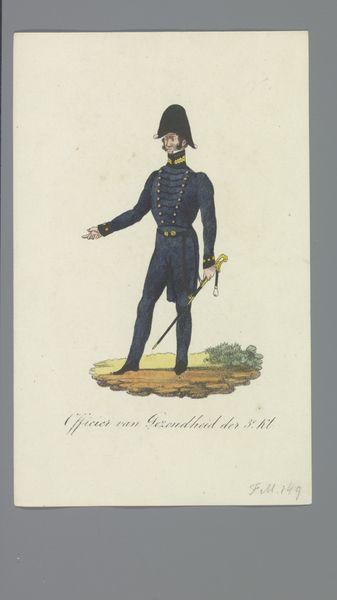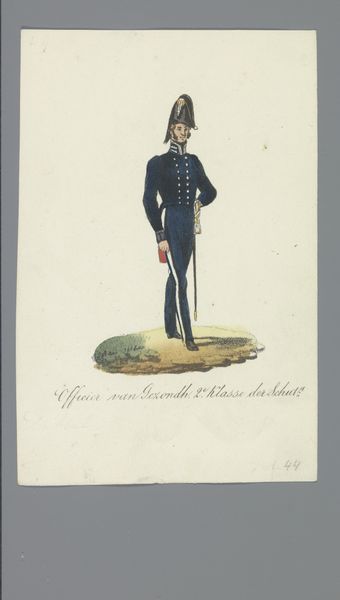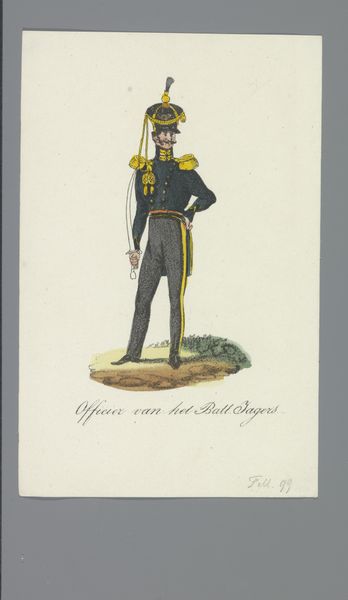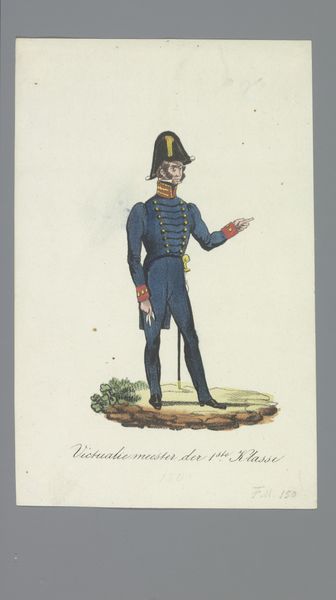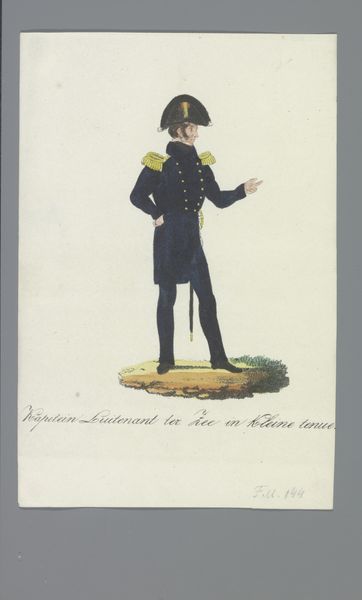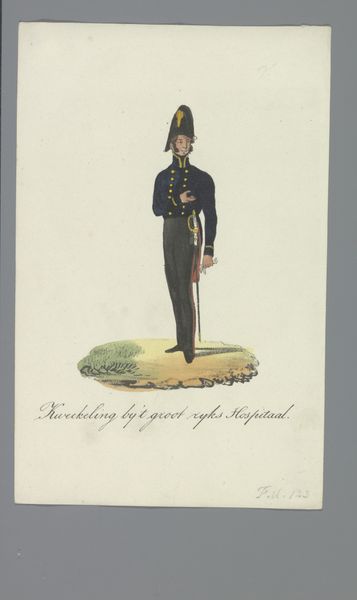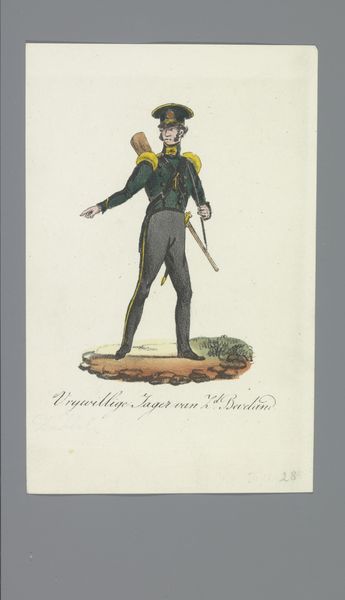
painting, watercolor
#
portrait
#
painting
#
watercolor
#
romanticism
#
watercolour illustration
#
genre-painting
Dimensions: height 170 mm, width 110 mm
Copyright: Rijks Museum: Open Domain
Curator: Here we have "Officier van Gezondh: der 2e Klasse", which translates to "Medical Officer, 2nd Class". The artist is Albertus Verhoesen, and we believe it was rendered between 1835 and 1850. The work on display at the Rijksmuseum is a watercolor painting, a testament to the Romanticism period. Editor: The colors are so muted, giving it a very somber feel, even a hint of melancholy. His stance, rather stiff and formal, is also echoed in the somewhat regimented and meticulous composition. Curator: Precisely. Given the subject, a medical officer, one could argue that the formality serves to underscore the importance of the profession in that era. We must consider the context. Medical practitioners, even those of the '2nd class,' held positions of respect, closely aligned with the civic duties of the State. Editor: Civic duties of the State, yes, but what about the visual language? The subtle details – the gold accents on his uniform, the confident angle of his hat – do these point to a visual power dynamic beyond mere State endorsement? It feels like the visual presentation itself claims some kind of elevated status. Curator: A potent consideration. Indeed, Verhoesen expertly manipulates elements like light and shadow to craft a sense of gravity. Consider how the darker tones delineate the officer’s features and contrast sharply against the off-white background, highlighting the central figure, as any successful portrait should. Editor: It is also curious how he is slightly elevated on the small mound. Note the attention to surface; this tiny raised section adds a peculiar note of importance. What kind of space does the painting intend to convey? Curator: I think, considering the scale, the placement of the text identifying him so prominently beneath his feet is important, and certainly it creates a relationship between his being and social role. Editor: This piece allows us to reflect on art's enduring dialogue with society. The intersection between art and civic structure is not so far apart. Curator: And perhaps underscores art's remarkable capacity to synthesize elements, color, composition, subject matter and, transform them into a meditation of the moment.
Comments
No comments
Be the first to comment and join the conversation on the ultimate creative platform.

